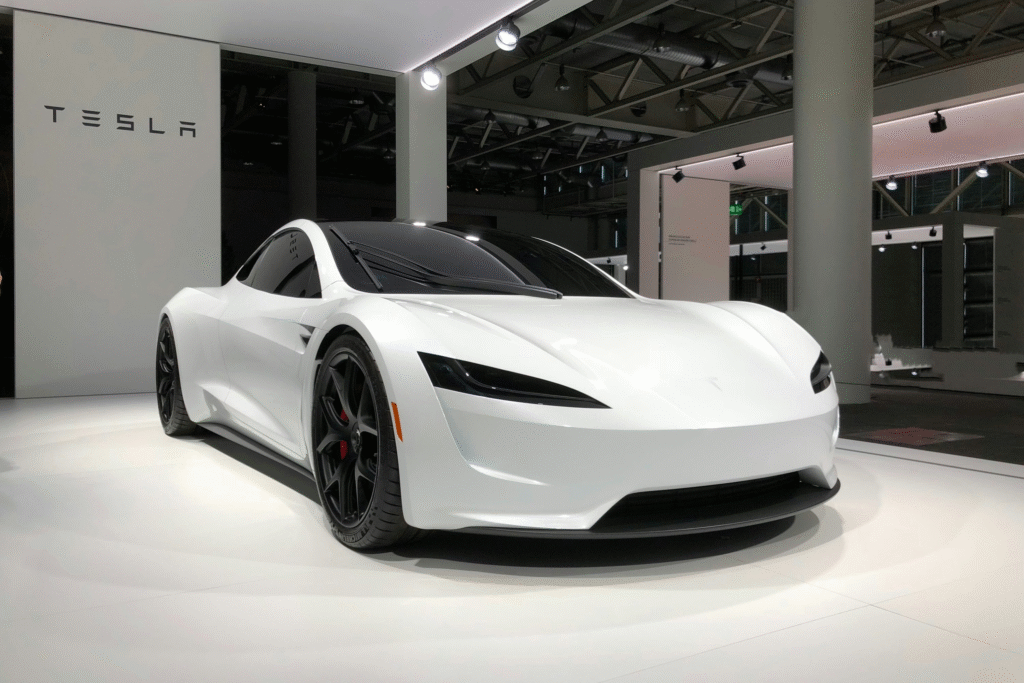Tesla is expected to have a strong financial quarter as buyers rush to grab electric vehicles before a $7,500 U.S. tax credit expires. The company has launched cheaper versions of its popular cars to attract more customers, though this move has affected its profit margins and raised investor concerns.
“Change is the only constant,” as they say — and Tesla seems to know this better than anyone else. The electric car giant is gearing up for what analysts believe will be a strong third quarter, all thanks to a last-minute rush by U.S. customers eager to make the most of an expiring federal electric vehicle (EV) tax credit.
As the deadline for the $7,500 tax benefit approaches, Tesla showrooms have been buzzing with buyers hoping to save money before the incentive disappears. This surge in demand has given Tesla a much-needed boost, especially after months of slower sales and rising competition. Yet, while the company celebrates the spike in orders, experts say the real question lies in what comes next for Tesla — and its unpredictable CEO, Elon Musk.
Elon Musk, known for his bold statements and unpredictable nature, now faces the challenge of keeping Tesla’s momentum alive once the tax credit fades away. Many are eager to hear his plans when Tesla reports its third-quarter results. Will the company’s new, cheaper cars continue to attract customers in the U.S.? And can Tesla expand its charm to Europe and Asia, where competition is heating up? These are the questions that investors, customers, and analysts are all waiting to be answered.

In a smart but risky move, Tesla has introduced new versions of its popular Model 3 and Model Y. These new trims, known as the Standard versions, are designed to be more affordable. By reducing the price by about $5,000 to $5,500, Tesla hopes to appeal to more middle-class buyers. To achieve this, the company has made several changes — smaller batteries, less powerful motors, and the removal of some features like rear touchscreens and seat-back pockets. It’s a simpler car at a simpler price.
But not everything comes without a cost. Tesla’s decision to make cheaper models means that its profit margins — once the envy of the auto industry — are beginning to shrink. In addition to cutting prices, the company also reduced lease rates for its premium models to attract more buyers. These changes have worried investors, who fear that Tesla might be sacrificing long-term profitability just to maintain short-term sales numbers.
Still, Tesla’s overall revenue for the third quarter is expected to rise by about 4.2% compared to the same period last year, reaching an estimated $26.24 billion. That’s no small achievement, considering the current global challenges in the auto industry — from supply chain disruptions to rising material costs. However, Tesla’s automotive gross margin (excluding regulatory credits) is expected to fall to 15.6%, compared to 17.05% last year. This shows that while sales are growing, the profits earned on each vehicle are slightly thinner.
For Tesla, the introduction of the Standard trims could be a clever way to stay competitive in an increasingly crowded market. With carmakers like Ford, General Motors, Hyundai, and even new Chinese brands launching their own electric vehicles, Tesla’s once-unchallenged dominance is being tested. Offering more affordable models could help the company retain its market share, especially among first-time EV buyers.
However, not all news is bright. Sales of Tesla’s existing models have begun to show signs of slowing down. Last year, Tesla’s lineup — which has not seen major design changes in a while — experienced a decline in sales for the first time. Analysts now predict an 8.5% fall this year. Some experts believe this slowdown is partly due to Elon Musk’s recent political comments, which have alienated certain groups of buyers.
For a company that has built its image on innovation, energy, and inclusivity, Musk’s controversial remarks have created unexpected roadblocks. Many customers love Tesla cars for their performance and eco-friendly nature, but some now hesitate to buy because of the company’s outspoken CEO. It’s a reminder that in today’s world, a brand’s identity often depends not only on its products but also on its leadership.
Despite the challenges, Tesla’s loyal fans remain hopeful. The company has faced ups and downs before and has always found ways to bounce back. The introduction of cheaper models, the push for efficiency, and the rush to benefit from U.S. tax credits all show that Tesla is still adapting, experimenting, and evolving.
In the bigger picture, Tesla’s current strategy might be about more than just quarterly profits. It’s about keeping the brand relevant, ensuring more people can afford to drive electric, and preparing for the next big phase of growth. The company’s expansion plans in Europe and Asia suggest that Tesla is eyeing the global market more aggressively than ever before. With rising interest in clean energy and stricter emission laws worldwide, there’s still plenty of room for Tesla to grow — if it can play its cards right.
Investors, on the other hand, are watching closely. They’re eager to hear how Musk plans to balance affordability with profitability. Will the company focus on innovation — like self-driving technology and new battery developments — or continue slashing prices to fight competitors? These decisions could shape Tesla’s financial health for years to come.
One thing is clear: Tesla’s journey is far from over. The excitement around the expiring U.S. EV tax credit has given the company a short-term push, but maintaining that growth will depend on smart strategy, continuous innovation, and perhaps a little less controversy from its leadership.
As one market analyst put it, “Tesla is at a turning point. It’s not just about how many cars they sell this quarter, but about how they plan for the future.” That statement captures the moment perfectly. Tesla’s success today is not only measured by how many cars it sells but by how well it prepares for the challenges ahead — technological, financial, and even political.
In the end, Tesla’s story this quarter is a mix of excitement, risk, and transformation. The race to grab the last bit of tax benefit may have boosted sales, but what will keep Tesla on top is its ability to innovate, inspire, and stay ahead of the curve.
“Tesla has always been more than a car company,” one fan said recently. “It’s a symbol of change.”
And perhaps that’s exactly what this strong quarter represents — not just a good financial result, but another reminder that Tesla is still driving the future, one electric mile at a time.


